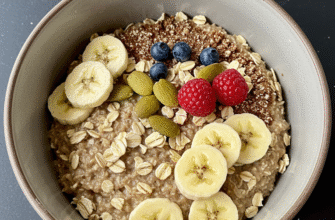Ever heard people talking about vitamins and minerals? Maybe you’ve seen them listed on food labels or supplement bottles. These tiny powerhouses are what we call
micronutrients. While we need large amounts of macronutrients like carbohydrates, proteins, and fats for energy and building blocks, we only need small amounts of micronutrients. But don’t let the “micro” fool you – they are absolutely vital for our bodies to function properly.
Think of your body like a very complex machine. Macronutrients are the fuel and the main building materials. Micronutrients, on the other hand, are like the specialized tools, the spark plugs, the essential fluids, and the tiny cogs that make sure everything runs smoothly. Without them, many crucial processes would grind to a halt or become inefficient. They help convert food into energy, support our immune system, enable brain function, assist in growth and repair, and so much more.
Breaking Down the Micros: Vitamins and Minerals
Micronutrients are broadly divided into two main categories:
vitamins and
minerals. While both are essential, they differ in their chemical structure and how our bodies handle them.
Vitamins: The Organic Helpers
Vitamins are organic compounds, meaning they are made by plants or animals (including us, in some cases, like Vitamin D from sunlight). They are essential organic molecules that our bodies need to perform specific functions but generally cannot produce in sufficient quantities on their own. They act often as coenzymes, helping enzymes (proteins that speed up chemical reactions) do their jobs effectively. Vitamins can be further split into two groups based on how they dissolve:
- Fat-Soluble Vitamins: These include vitamins A, D, E, and K. As the name suggests, they dissolve in fat and are stored in our fatty tissues and liver. This means they can build up in the body over time. We don’t need to consume them every single day, but consistent intake over time is important. Good sources often include fatty foods like oils, dairy, liver, and fatty fish.
- Water-Soluble Vitamins: This group includes Vitamin C and the large family of B vitamins (like B1, B2, B3, B5, B6, B7, B9, B12). They dissolve in water. Because they dissolve in water, they are not generally stored in large amounts in the body (with some exceptions like B12). Excess amounts are usually flushed out through urine. This means we need a more regular intake of these vitamins through our diet. They are found in a wide variety of foods, including fruits, vegetables, grains, and lean meats.
Minerals: The Inorganic Essentials
Minerals are inorganic substances, meaning they come from the earth – soil and water – and cannot be made by living organisms. Plants absorb them from the soil, and animals (including humans) get them by eating plants or other animals. Minerals are crucial for structural components (like calcium in bones and teeth) and play vital roles in fluid balance, nerve transmission, and muscle contractions. Like vitamins, minerals are also categorized, but based on the amount our body needs:
- Major Minerals (Macrominerals): We need these in larger amounts compared to trace minerals. This group includes calcium, phosphorus, magnesium, sodium, potassium, chloride, and sulfur. They are essential for bone health, fluid balance, nerve function, and muscle health.
- Trace Minerals (Microminerals): We only need tiny amounts of these, but they are still incredibly important. Examples include iron, manganese, copper, iodine, zinc, cobalt, fluoride, and selenium. They are involved in critical processes like oxygen transport (iron), thyroid function (iodine), immune support (zinc), and protecting cells from damage (selenium).
Why Can’t We Just Ignore Them?
Because our bodies rely on these tiny elements for nearly every process. A lack of sufficient micronutrients, even if subtle, can impact how we feel and function. Think about it: feeling constantly tired might relate to iron levels involved in carrying oxygen. Issues with night vision could link back to Vitamin A. Getting sick often? Vitamin C and Zinc play roles in immune function. Bone strength relies heavily on Calcium and Vitamin D working together. These are just general examples illustrating the widespread importance of these nutrients.
Our bodies are constantly working, repairing, defending, and energizing. Micronutrients are the facilitators, the catalysts, the behind-the-scenes workers making it all possible. From the electrical signals firing in our brain to the contraction of our muscles and the health of our skin, micronutrients are involved.
Verified Information: The best approach to getting enough micronutrients is through a varied and balanced diet. Eating a wide range of fruits, vegetables, whole grains, lean proteins, and healthy fats naturally provides a diverse mix of essential vitamins and minerals. Relying solely on a few food types can lead to gaps in nutrient intake.
Getting Your Daily Dose: Food First!
The absolute best source of micronutrients is real, whole food. Nature packages these vitamins and minerals perfectly, often along with other beneficial compounds like fiber and antioxidants that work synergistically.
Tips for Boosting Micronutrient Intake:
- Eat the Rainbow: Different colors in fruits and vegetables often signify different types of nutrients. Aim for a variety of colors on your plate throughout the day – red tomatoes, orange carrots, yellow peppers, green spinach, blueberries, purple eggplant.
- Choose Whole Grains: Opt for brown rice, whole wheat bread, oats, and quinoa over refined grains. The outer layers (bran and germ) stripped away during refining contain many B vitamins and minerals.
- Include Lean Proteins & Legumes: Meat, poultry, fish, beans, lentils, and tofu are good sources of B vitamins and minerals like iron and zinc.
- Don’t Forget Healthy Fats: Nuts, seeds, avocados, and fatty fish provide fat-soluble vitamins and essential minerals.
- Consider Fortified Foods: Some foods like milk, breakfast cereals, and plant-based milk alternatives are fortified with specific vitamins and minerals (like Vitamin D, Calcium, or B12). Check the labels.
Cooking methods can also affect micronutrient content. Water-soluble vitamins can leach out into cooking water, so steaming or stir-frying vegetables might retain more nutrients than boiling them for long periods. However, some nutrients become more available after cooking (like lycopene in tomatoes).
What About Supplements?
Supplements can have a place, especially if someone has a diagnosed deficiency, specific dietary restrictions (like veganism potentially needing B12 supplementation), certain life stages (like pregnancy requiring extra folate), or particular health conditions. However, they are meant to supplement the diet, not replace whole foods.
Important Information: While essential, getting excessive amounts of certain micronutrients, particularly fat-soluble vitamins and some minerals, through supplements can be harmful. It’s always best to prioritize getting nutrients from food. If considering supplements, especially high-dose ones, it’s wise to discuss it with a healthcare professional or registered dietitian first to ensure they are necessary and safe for your individual needs.
Think of it this way: food provides a complex package of nutrients that work together. A supplement usually provides isolated nutrients, potentially in high concentrations. The “food first” approach generally provides a safer and more balanced way to meet your needs.
Understanding the Big Picture
Micronutrients are fundamental to our well-being. They might be needed in small amounts, but their impact is enormous. By focusing on a diverse, colourful, and balanced diet rich in whole foods, you provide your body with the essential vitamins and minerals it needs to thrive. It’s not about obsessing over every single microgram, but rather appreciating the power of varied, nutrient-dense foods and making conscious choices to include them regularly in your meals. Understanding the basics of micronutrients empowers you to make better food choices for long-term health and vitality, ensuring your internal machinery runs smoothly day in and day out.









